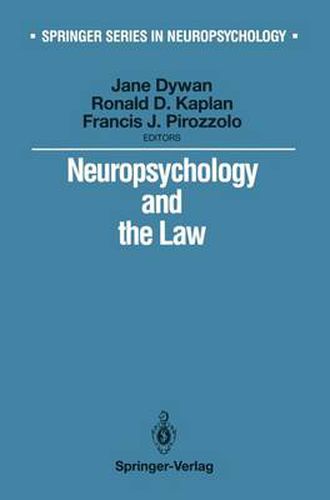Readings Newsletter
Become a Readings Member to make your shopping experience even easier.
Sign in or sign up for free!
You’re not far away from qualifying for FREE standard shipping within Australia
You’ve qualified for FREE standard shipping within Australia
The cart is loading…






This title is printed to order. This book may have been self-published. If so, we cannot guarantee the quality of the content. In the main most books will have gone through the editing process however some may not. We therefore suggest that you be aware of this before ordering this book. If in doubt check either the author or publisher’s details as we are unable to accept any returns unless they are faulty. Please contact us if you have any questions.
We have had a number of interesting cases come to our attention over the years. The following are illustrative of some of the issues that can emerge at the interface between neuropsychology and the law. The first involved a patient suffering from a debilitating fear of heights. The fear seemed a reasonable consequence of the fact that he had been a passenger on a plane that crashed while attempting take off. Given that many of the passengers and crew died or were seriously injured, this man was quite fortunate. In fact, he could be said to have lived a charmed life. It had been just a year since he had been involved in an industrial accident in which he could have easily died. He came away from that accident with injuries to his legs and a concussion. That accident had also involved him falling from a considerable height so that there was some discussion among clinic staff about how well the patient’s circumstances and symptoms fit the diagnostic category of posttraumatic stress disorder.
Supportive psychotherapy was used as an aid in dealing with his re curring memories of the plane crash and systematic desensitization was quite successful in reducing the most disruptive consequences of his fear of heights. However, during the course of treatment, it became apparent that there were a number of problems that had not been addressed.
$9.00 standard shipping within Australia
FREE standard shipping within Australia for orders over $100.00
Express & International shipping calculated at checkout
This title is printed to order. This book may have been self-published. If so, we cannot guarantee the quality of the content. In the main most books will have gone through the editing process however some may not. We therefore suggest that you be aware of this before ordering this book. If in doubt check either the author or publisher’s details as we are unable to accept any returns unless they are faulty. Please contact us if you have any questions.
We have had a number of interesting cases come to our attention over the years. The following are illustrative of some of the issues that can emerge at the interface between neuropsychology and the law. The first involved a patient suffering from a debilitating fear of heights. The fear seemed a reasonable consequence of the fact that he had been a passenger on a plane that crashed while attempting take off. Given that many of the passengers and crew died or were seriously injured, this man was quite fortunate. In fact, he could be said to have lived a charmed life. It had been just a year since he had been involved in an industrial accident in which he could have easily died. He came away from that accident with injuries to his legs and a concussion. That accident had also involved him falling from a considerable height so that there was some discussion among clinic staff about how well the patient’s circumstances and symptoms fit the diagnostic category of posttraumatic stress disorder.
Supportive psychotherapy was used as an aid in dealing with his re curring memories of the plane crash and systematic desensitization was quite successful in reducing the most disruptive consequences of his fear of heights. However, during the course of treatment, it became apparent that there were a number of problems that had not been addressed.